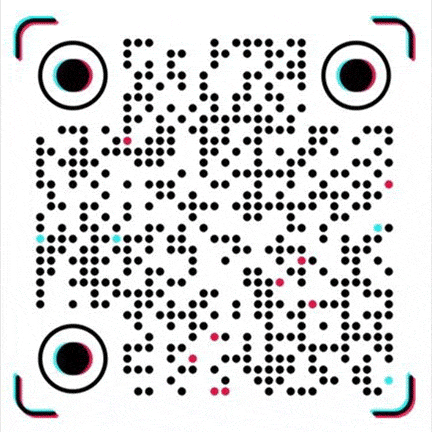Titanium Dioxide: Advantages and Challenges in Use
The titanium dioxide that everyone often talks about is actually titanium dioxide (TiO₂), which is a white inorganic compound.
Its strength lies in its high refractive index, stable chemical properties, and excellent optical properties. Titanium dioxide has three crystal structures, namely rutile, anatase, and brookite, but in industrial production, rutile and anatase are the most commonly used.
With these unique "abilities", titanium dioxide has a wide range of applications, including coatings, plastics, papermaking, cosmetics, food additives, and even photocatalytic materials.
Core advantages of titanium dioxide
High hiding power and whiteness
Titanium dioxide has a high refractive index (rutile type is about 2.76, anatase type is about 2.55), and it performs well among inorganic pigments. With its strong visible light scattering ability, it gives the material excellent hiding power and whiteness. For example, a small amount of addition to the coating can cover the base and improve the coating effect; as a filler in papermaking, it can enhance the opacity and whiteness of the paper.
UV shielding ability
Titanium dioxide has significant absorption and scattering effects on ultraviolet rays (UVB and UVA):
Absorption mechanism: Its band gap width (rutile type 3.0 eV, anatase type 3.2 eV) can absorb ultraviolet rays with a wavelength less than 400 nm and convert them into harmless heat energy;
Scattering mechanism: Nano-sized titanium dioxide (particle size 20-100 nm) has higher scattering efficiency for ultraviolet rays and is often used in sunscreen products. For example, titanium dioxide with a particle size of 30 nm can effectively shield UVB (280-320 nm).
Corrosion resistance and aging resistance
Titanium dioxide does not react with acids, alkalis, oxidants, etc. at room temperature, and is only soluble in hydrofluoric acid and hot concentrated sulfuric acid.
This feature enables it to resist the erosion of environmental factors such as acid rain and ultraviolet rays in outdoor coatings and plastic door and window profiles, extending the service life of the material. For example, after adding rutile titanium dioxide to building exterior wall coatings, weather resistance can be increased by more than 30%.
Safety in the food and pharmaceutical fields
Titanium dioxide is listed as a GRAS (generally recognized as safe) substance by the US FDA (Food and Drug Administration). It can be used as a food additive (such as a whitening agent for candies and chocolates) or as a coating material for tablets. Its non-toxic and non-irritating properties meet strict food contact material safety standards.
Anatase titanium dioxide produces photogenerated electron-hole pairs under ultraviolet irradiation, which in turn generate hydroxyl radicals (·OH) and superoxide anions (·O₂⁻). These active substances can degrade organic pollutants such as formaldehyde and benzene, and even kill bacteria. For example, photocatalytic filters loaded with titanium dioxide can be used in air purifiers, with a formaldehyde removal rate of more than 90%; in self-cleaning glass, titanium dioxide coatings can decompose organic stains on the surface and achieve a self-cleaning effect under rain erosion.
Multi-field compatibility
Titanium dioxide is compatible with a variety of media such as water and oil. Its dispersibility in polymers can be further improved by surface modification (such as silane coupling agent treatment), and is suitable for plastics (such as PVC pipes), rubber, ink and other materials.
Cost-effectiveness advantage
Compared with other white pigments (such as zinc oxide and lead powder), titanium dioxide has stronger hiding power and less usage per unit area. Although the cost of nano-scale products is higher, the price of ordinary industrial-grade titanium dioxide (about 15,000-20,000 yuan/ton) is still competitive among high-performance pigments.
Main disadvantages of titanium dioxide
(I) Potential risks brought by photoactivity
Controversy over the biosafety of nano-scale titanium dioxide
When the particle size of titanium dioxide is reduced to the nanoscale, the free radicals generated by its photocatalysis may damage cell DNA. For example, studies have shown that nano titanium dioxide (
Degradation of organic matrices
In plastics and coatings, unmodified titanium dioxide catalyzes the oxidative degradation of matrix polymers under ultraviolet light, causing the material to become brittle and discolored. For example, titanium dioxide-modified PVC material without added light stabilizers may lose 20% in tensile strength after one year of outdoor exposure.
(II) Dispersion problems: nanoagglomeration and performance loss
Agglomeration tendency of nanoparticles
Nano titanium dioxide has a large specific surface area (up to 50-100 m2/g) and high surface energy. Nano titanium dioxide is very easy to form soft and hard agglomerates, resulting in uneven dispersion in solvents or matrices. For example, in water-based coatings, untreated nano titanium dioxide will form agglomerates with a particle size of up to micrometers, reducing the transparency and mechanical properties of the coating.
Complex dispersion process
To solve the agglomeration problem, high-speed shearing, ultrasonic treatment or surface modification (such as grafting polymers) is required, which increases the complexity and cost of the production process. For example, the preparation cost of high-end nano titanium dioxide slurry is 30%-50% higher than that of ordinary titanium dioxide.
(III) Environmental load and energy consumption of production process
Pollution problems of traditional processes
Sulfuric acid method: using ilmenite as raw material, concentrated sulfuric acid is required to dissolve, producing a large amount of acidic wastewater (including FeSO₄) and toxic gas (SO₂), and treating 1 ton of titanium dioxide produces about 8-10 tons of wastewater.
Chlorination method: using rutile ore as raw material, chlorine and dioxin-like substances may be released during high-temperature chlorination. Although the pollution level is lower than that of the sulfuric acid method, the equipment investment is higher (2-3 times that of the sulfuric acid method).
High energy consumption characteristics
The calcination process of titanium dioxide needs to be carried out at a high temperature of 800-1200℃, and the energy consumption per ton of product is about 1500-2000 kWh, which is 2-3 times that of ordinary inorganic pigments.
(IV) Limitations of application scenarios
Limitations of photocatalytic efficiency
Titanium dioxide only responds to ultraviolet rays (about 5% of sunlight energy), and the utilization rate of visible light is low. For example, in indoor low-light environments, the efficiency of photocatalytic degradation of formaldehyde is less than 10% of that in outdoor high-light environments.
Competitive pressure from substitutes
In some areas, titanium dioxide faces the challenge of alternative materials:
Sunscreen: zinc oxide has a better shielding effect on long-wave UVA and lower photosensitivity;
White pigment: Inorganic fillers such as barium sulfate and calcium carbonate are low-cost and suitable for low-end products with low requirements for covering power.
Titanium dioxide occupies an irreplaceable position in many industrial fields due to its excellent optical and chemical properties, but its photoactivity, dispersibility and production environmental protection issues still need to be gradually solved through technological innovation.
Our platform connects hundreds of verified Chinese chemical suppliers with buyers worldwide, promoting transparent transactions, better business opportunities, and high-value partnerships. Whether you are looking for bulk commodities, specialty chemicals, or customized procurement services, TDD-Global is trustworthy to be your fist choice.















